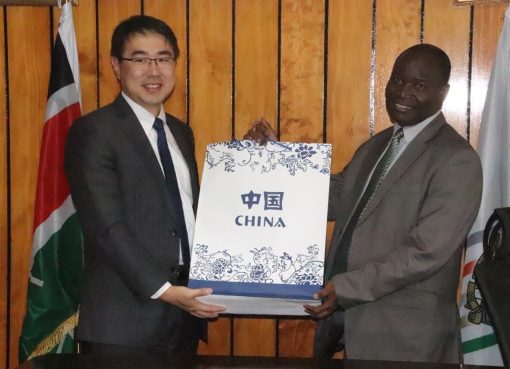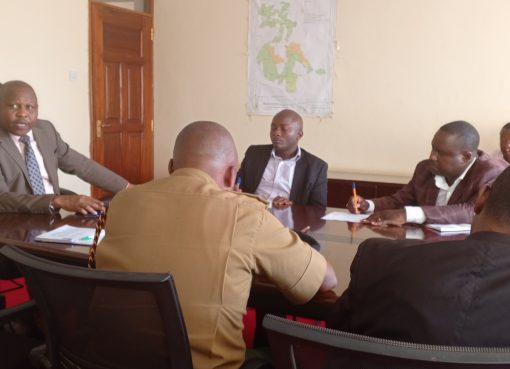The Nakuru Governor, Lee Kinyanjui is optimistic that pyrethrum sub-sector will soon be back on its feet following revival strategies put in place by the devolved unit in partnership with state agencies and private sector players.
In a bid to give the high potential multi-billion sub sector a new lifeline, the governor indicated that his administration was working with four state owned agencies in research and development of disease resistant and high yielding pyrethrum seed varieties that will enable farmers get higher returns.
The institutions are charged with ensuring that farmers get clean planting material and include Kenya Plant Health Inspectorate Service (KEPHIS), Kenya Agricultural and Livestock Research organization (KALRO), the Pyrethrum Processing Company of Kenya (PPCK) and Egerton University.
“We will inject Sh.24 million for research and development in the pyrethrum enterprise. Last year, we set aside Sh.10 million for the same purpose. We have increased the amount after studies confirmed that ongoing efforts to revive the sub sector have started paying off with increased production over the past few months,” noted Mr. Kinyanjui.
The County Executive Committee Member for Agriculture, Dr. Immaculate Njuthe Maina said part of the funds will be channeled into subsidizing agriculture activities in the sub sector and procurement of farm inputs and planting materials to growers of the cash crop within the devolved unit. The funds will also facilitate transfer of technical expertise to pyrethrum farmers.
She noted that national government’s contribution towards reviving the sector through allocations of billions of shillings, setting up of legal frameworks and forming a task force for separation of functions had resulted in more farmers across the country embracing the crop.
Dr. Maina stated that 3,000 farmers were currently planting the crop in the county from less than 250 three years ago.
“Pyrethrum is now a liberalized crop. We are having discussions with some partners who will support the farmers through provision of inputs and also sign market agreements with our growers. Kentegra has contracted 2,200 farmers in Kenya,” asserted the Agriculture County executive.
Dr. Maina said Nakuru County would continue engaging top officials from other Pyrethrum growing areas towards formation of a bloc that will also boost their marketing power.
Pyrethrum -growing counties that are seeking to form the bloc are Nyandarua, Nyeri, Kiambu, Trans Nzoia, Uasin Gishu, Elgeyo Marakwet, Kisii and West Pokot.
Others are Nandi, Baringo, Laikipia, Narok, Kericho, Bomet ,Kisii, Nyamira, Bungoma, Murang’a, Kirinyaga and Meru.
The governor further said that his government was collaborating with Egerton University in training more pyrethrum extension workers even as it seeks to sustain the drive to revive the once thriving sector.
Kinyanjui observed that once farmers are equipped with technical advice and have access to clean planting materials poverty and unemployment levels in the county would be reduced to tolerable levels.
“Revival of pyrethrum is crucial as agriculture is one of the Big Four Agenda for the national transformation that will afford the people high quality of lives. If we fail to get it right this time around we shall be in trouble because as a devolved unit we have promised farmers to make radical changes that would put more money in their pockets,” said Kinyanjui.
The KEPHIS Managing Director, Dr. Esther Kimani, said that her organization has now been cleared to certify all pyrethrum planting materials and assured farmers that cases of uncertified seeds would be a thing of the past.
“The good news to pyrethrum farmers is that the government has authorized Kephis to ensure all planting materials are certified because it is keen on making sure the revival process is successful and farmers earn good returns from their cash crop,” said Dr. Kimani.
Kinyanjui noted that the Pyrethrum Processing Company of Kenya (PPCK) has recruited farmers in eight counties with 3,000 acres under pyrethrum cultivation and hopes to hit 10,000 acres by June this year.
“Ultimately, PPCK hopes to increase production from the current 350 tonnes to at least 1,000 tonnes. The Settling of outstanding debts amounting to over Sh. 1 billion by the National government has also helped in creating confidence among farmers. Now we just need to guarantee timely payments and the sector will start to blossom,” stated the governor.
Opening up the sector for competition by licensing private companies to compete with the PPCK, Dr. Maina said, would turn around fortunes of pyrethrum farmers across the Counties growing the cash crop.
The companies, including Kentegra, Africhem Botanical, Orion EPZ Ltd, Highchem East Africa and Senju Development Company are designed to restore confidence among farmers by making the sector competitive.
The state-owned PPCK is also putting in place measures that include supplying its contracted farmers, with seeds and safeguarding high yielding varieties.
Kentegra’s Chief Operating Officer Scott Sweat said ongoing efforts to revive pyrethrum have started paying off with increased production over the past few months. Kentegra has contracted 600 farmers in Eburru, Molo and Kuresoi in Nakuru County, majority of whom are small holder farmers.
The Kenya Plants Health Inspectorate Services (Kephis) has on its part, licensed three nurseries to issue pyrethrum planting materials to 6,000 farmers in yet another effort aimed at stimulating the ailing sub-sector.
The three are Highchem, which will operate in Subukia, Pygro in Bahati and the Chinese firm Senju that will operate in UasinGishu County.
“We want to ensure the nursery operators are adhering to the best agronomical practices before we issue them with licenses as we want our farmers to get it right and avoid losses due to bad seedlings after planting their materials. Before the next planting season, farmers need enough clean planting materials.” said Dr. Maina.
The PPCK, with six nurseries in Njoro, Molo, Limuru, Bahati, Nakuru, Olenguruone and Nyamira is among the top processors awaiting the Kephis approval.
In the 1980s and early 1990s, Kenya was the epicenter of the world’s pyrethrum sector.
It is a cash crop that is always in high demand because of its use in the production of natural insecticides and pesticides while its byproduct, pyrethrin, is used in the manufacture of medical and personal care products. Kenya was the world’s leading producer at an annual average of 18,000 tonnes and commanding 80 per cent of world share.
In its heyday, some 200,000 farmers directly earned a living from the crop, which also indirectly supported about four million people.
While hailing revival efforts, Pyrethrum Growers Association of Kenya Chairman. Justus Monda called on all key players to supply farmers with critical farm inputs particularly seedlings.
He said Kenya should urgently revise the opening up of the pesticides and insecticides market to synthetics from India and China that have flooded the market at the expense of natural pyrethrum.
“The pyrethrum revival strategy comes at a time when demand for natural pyrethrins is on the rise as agrichemical manufacturers increasingly prefer products with low mammalian toxicity and zero-residue bio pesticides. Kenya should take advantage of this,” said Monda.
Nakuru is the home of pyrethrum with Molo sub-county being the leading growing area and is reputed for producing the highest pyrethrin content that attracts huge demand in the international market.
By Jane Ngugi




